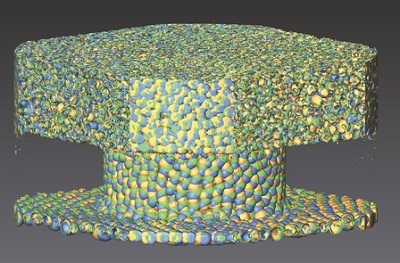GigaFRoST: the gigabit fast readout system for tomography
 A thorough understanding of dynamic processes in areas as diverse as biomechanics, materials science miniature engineering, and energy research relies on our ability to observe structural changes of materials in three-dimensional detail at high speeds. X-ray microtromography is a technique capable of looking inside opaque objects without destroying them. So far, the observation of very fast processes has been hindered by the lack of suitable camera systems. To enable live time-resolved measurements of real dynamic phenomena over extended periods of time, a group of scientists in Switzerland [Mokso et al. (2017), J. Synchrotron Rad. 24, 1250-1259] have developed a new high-frame-rate camera readout system, called GigaFRoST (Gigabit Fast Readout System for Tomography).
A thorough understanding of dynamic processes in areas as diverse as biomechanics, materials science miniature engineering, and energy research relies on our ability to observe structural changes of materials in three-dimensional detail at high speeds. X-ray microtromography is a technique capable of looking inside opaque objects without destroying them. So far, the observation of very fast processes has been hindered by the lack of suitable camera systems. To enable live time-resolved measurements of real dynamic phenomena over extended periods of time, a group of scientists in Switzerland [Mokso et al. (2017), J. Synchrotron Rad. 24, 1250-1259] have developed a new high-frame-rate camera readout system, called GigaFRoST (Gigabit Fast Readout System for Tomography).
While a number of commercial imaging systems are capable of acquiring images with very high frame rates, they are usually designed for burst operation, storing data on internal memory which is read out only after the measurements and at speeds much slower than the experiment duration. This results in essentially blind acquisition. Moreover, the total acquisition time is limited by the size of the available memory, which is usually not enough to cover the full duration of a dynamic process. GigaFRoST solves this problem by streaming the data from the camera directly to a dedicated server, which is able to make the data available for previewing and analysis essentially in real time, while the amount of data that can be acquired is limited only by the server memory or the attached file storage capacity.
This advancement opens up countless new opportunities for the observation of dynamic systems with high temporal resolution, such as crack propagation in materials, bubble growth in metal foams, musculoskeletal motions in insects, and many more.
Making use of a modular and easily extendable, parallelizable architecture, the same data streaming approach can be used and adapted for other high-performance detector systems.
Dr Christian M. SchlepützBeamline Scientist, Paul Scherrer Institut, Switzerland


